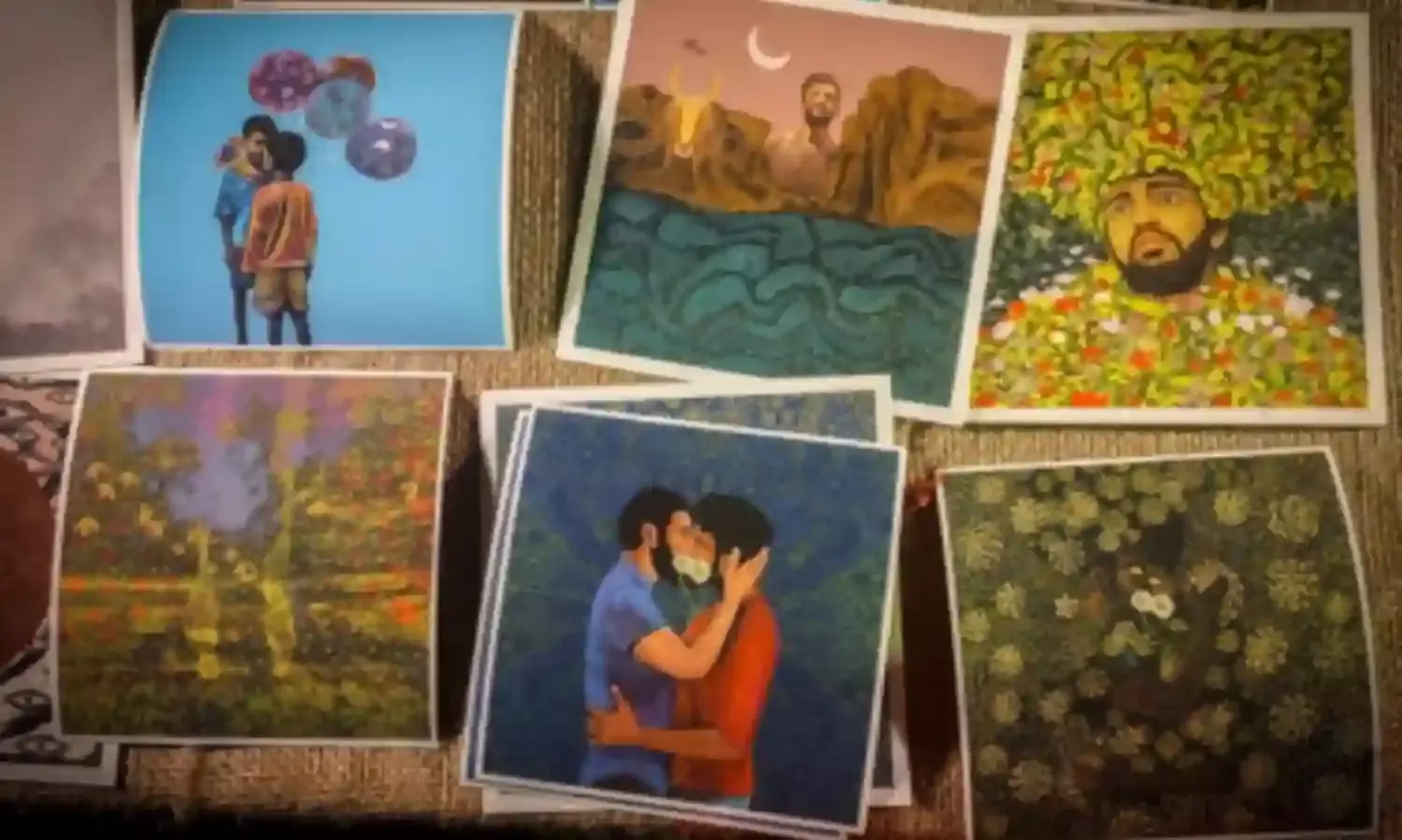A Rainbow Of Talent
The recently concluded "Flying Chameleon Art Festival" in New Delhi focused on queer art and expression

The vivid rainbow colours beam with satisfaction and pride. Mid-October's chill greets the air's warmth and queerness. People are socialising, giggling, and celebrating while enjoying beverages, food, and the art that is being displayed.
The recently concluded "Flying Chameleon Art Festival" in New Delhi focused on queer art and expression, where the community used their expression to fight the dominance in the art spaces.
Priyanka, a 31-year-old transwoman living at the Mitr Trust Shelter Home with the support of her housemates, is at ease discussing her work with visitors and shares difficulties trans individuals face and how art has enabled them to achieve freedom.
"A transgender refuge house served as the origin of it all. We lacked the resources to pay for our care and meds. People were throwing away flowers, which is pollution. I discovered that the trash might be turned into incense. Since then, we've made the decision to turn waste materials into usable items, which has allowed us to collect money for our medication. Making us self dependent," said Priyanka.
Queer artists are working to bring out issues of the community to the people such as the rejection of a plea seeking recognition and registration of same-sex marriages under the Hindu Marriage Act (1956).
Interdisciplinary artist and educator Vivekananda is always on the quest for exhilarating experiences. A former Young India Fellow, they were influenced by Vincent Van Gogh, a Dutch Post-Impressionist artist. Generally obsessed with motifs, they use symbolism in their artwork to primarily represent themselves.
Their work offers a landscape of the coastal areas of India, including the western ghats and other areas, and draws heavily on the city of Mangalore, where they were born and raised. Presenting the work they have produced over the last seven years, they said they "have built a mental grammar" as a result of their previous experiences.
Similar to Vivekananda, gender fluid illustrator Mia Jose finds inspiration in Kerala, a region of South India where gender and patriarchy are prevalent. "I was brought up as a Christian in Kerala, but this is more about opposing Brahmanical patriarchy. Symbols and objects that tie us to hold onto individuals. Get married and wear flowers in your hair, much like the mark you have. Each of these represents a classic patriarchal community," said Jose, who has previously displayed her art in Shimla and Mumbai with the intention of highlighting life situations viewed as forbidden by the majority.
The most literate state in India is Kerala in the south, but LGBTQ+ people there feel victimised by conservatism. A 22-year-old lesbian from Kerala filed a court case in June of this year, after her girlfriend was kidnapped by her family. The couple acknowledged that their families continued to threaten them even after they were reunited by a Kerala court.
Jose believes that the queer scene in major cities cannot be compared to that in the rest of India. "Kerala loves to portray itself as being progressive, yet it isn't in many aspects. It is in some respects, but not in terms of how they handle LGBTQ+ identities. Behind that, there is a lot of toxic masculinity. safeguarding the idealised macho image," said Jose who feels why she can't stay there anymore.
Metropolitan India has witnessed countless pride marches since the Supreme Court decriminalised homosexuality. Various cultural events and film festivals that have celebrated queerness have also been held over the years. However, there are LGBTQ+ members from two-tier cities or rural areas who do not find a voice to share their own experiences.
Anil Kodnani, a 35-year-old makeup artist who attends many queer-centric events and festivals, thinks queer art festivals to be more than just those. Visiting with Sunny, who they met over social media. Kodnani travelled by overnight flight to Delhi to attend the festival.
"I attend the Gulabi Mela and the Bangalore Queer Film Festival every year. It features various LGBT genre movies from around the globe. That's great, but this one goes above that." Awed by the atmosphere, Anil said, "it is more inclusive, where people are truly getting together to help each other."
In the beginning, the "Flying Chameleon Art Festival" team began pitching to businesses who claimed to be "committed to diversity" since they were determined to not rely on crowdfunding. Unexpectedly, most of them never bothered to respond. "The most frequent response we got was that they couldn't help 'this time'," said the festival's director, Phoolkumari, "we contacted every potential location in Delhi that would be appropriate for film screenings. Each demanded that we make the reservation on our own.. that Delhi venues with a capacity of over 100 people charge expensive rates. We have even experienced censorship."
The festival team was on the verge of giving up when the Embassy of Switzerland responded, it was a breakthrough opportunity.
An alumnus of National School of Drama, the 29-year-old non-binary artist addressed the idea of a queer inclusive art festival and the significance of such occasions, "after all, there is the KASHISH Mumbai International Queer Film Festival. There are the Prides. Here, there are a lot of LGBT pop-ups. But where do we have a single structure where we may communicate for a long time?"
Ashish Kumar Kataria is an independent journalist based in New Delhi



